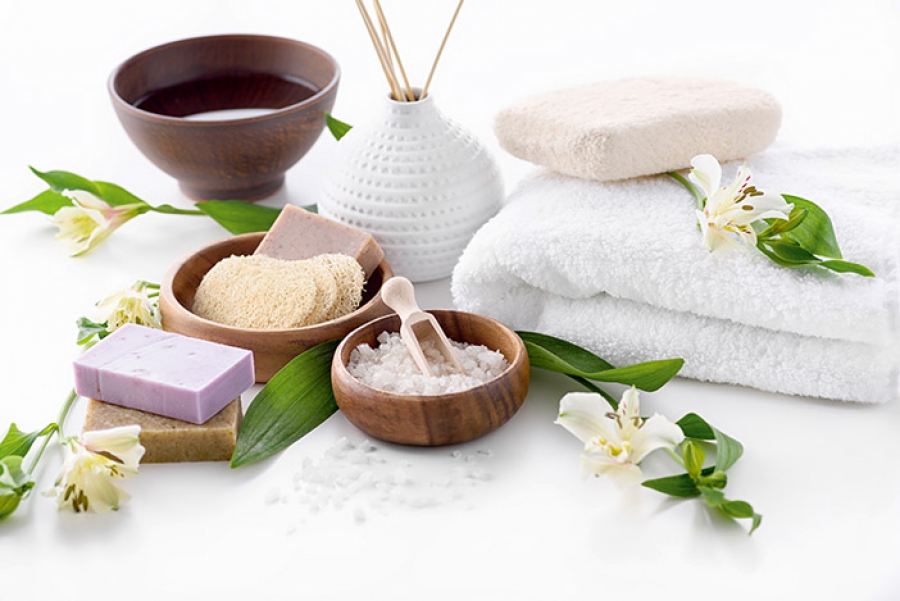 Sensitized skin is the body’s way of reacting to something internal or external it does not like. As a result, the body creates an inflammatory response that presents itself in the form of sensitized skin. Pollution, chemical irritants, dehydration, hormonal changes, smoking, diet, inadequate sleep, weather (extreme hot or cold), extremely hot or hard water, overuse of chemical or manual exfoliants, or fragrance can produce a sensitizing reaction. While the net effect can be the same as sensitive skin, sensitized skin “tends to look lusterless, blotchy, dry, and visibly irritated.”3
Sensitized skin is the body’s way of reacting to something internal or external it does not like. As a result, the body creates an inflammatory response that presents itself in the form of sensitized skin. Pollution, chemical irritants, dehydration, hormonal changes, smoking, diet, inadequate sleep, weather (extreme hot or cold), extremely hot or hard water, overuse of chemical or manual exfoliants, or fragrance can produce a sensitizing reaction. While the net effect can be the same as sensitive skin, sensitized skin “tends to look lusterless, blotchy, dry, and visibly irritated.”3
Finding and eliminating the triggers that cause the skin to become irritated is the first order of concern. Skin care professionals’ second priority should be ongoing skin hydration and skin strengthening. The best approach to dealing with sensitive and sensitized skin is to calm and re-build the skin. Using a botanical approach can yield quick and effective results.
ESSENTIAL OILS AND CO2 EXTRACTS
Essential oils are chemically complex plant molecules that are produced from 10 percent of all plants. From a process of steam distillation, this unique plant essence can be used to benefit humans. There is also a newer method of essential oil extraction whereby the plant essence is removed under vacuum pressure with carbon dioxide. One significant advantage of CO2 extracts is that they require far less plant material and time for extraction. Considering that it can take tons of plant material to produce one liter of essential oil, one can understand the benefits to this technology.
Carbon dioxide extractions can produce larger and more complex molecules, such as plant waxes that are lost from the heat of regular steam distillation. These larger molecules are especially beneficial for skin care. Carbon dioxide extracts are often listed as “select” or “total.” The select designation indicates that specific active compounds were extracted, whereas the total designation implies that all compounds were extracted. To understand the specifics, review the gas chromatography mass spectrometry (GC/MS) reports to fully understand which compounds were extracted.
 There is a great synergy between essential oils and CO2 extracts. For example, German chamomile essential oil ranges in color from pale green to deep navy blue, depending on the quality and where it was produced. German chamomile CO2 is more viscous, deep navy blue in color, and not as fragrant. Carbon dioxide blends better with aloe vera gel and has an affinity for skin care.
There is a great synergy between essential oils and CO2 extracts. For example, German chamomile essential oil ranges in color from pale green to deep navy blue, depending on the quality and where it was produced. German chamomile CO2 is more viscous, deep navy blue in color, and not as fragrant. Carbon dioxide blends better with aloe vera gel and has an affinity for skin care.
HOW TO TREAT SENSITIVE AND SENSITIZED SKIN
The body’s inflammatory response to an irritant is to become inflamed, red, hot, and itchy. Calming and soothing this irritated skin is critical. German chamomile (Chamomilla reticulata), sandalwood (Santalum album), and helichrysum (Helichrysum itallicum) are beneficial for soothing and nourishing inflamed skin. Add one drop of German chamomile to a small bowl of cool water and apply a cotton swab saturated in the mixture onto the affected areas. The results are nearly immediate.
When itching is present, essential oils work well with the addition of peppermint (Mentha piperita). Care should be taken to avoid the eye area or mucous membranes when using peppermint. Because its menthol effect can be overwhelming, much less peppermint essential oil should be used than the other oils. Peppermint essential oil is contraindicated for clients with a history of seizures.
These oils can be added to bentonite, rhassoul, Australian pink, or French clays in order to make a mask. These clays are highly nourishing to the skin as they contain minerals such as silica, magnesium, potassium, and calcium and deliver a high level of ion exchange. Clays refine skin texture, as well as brighten and soothe the skin. Add up to three drops of essential oil to the clay, add water, and mix. Re-moisten the clay mask during removal in order to avoid pulling on the skin.
In general, when using essential oils, less is more. Do not exceed a one percent dilution of essential oil for any skin treatment. Always dilute the oil in any base being used.
 CARRIER OILS
CARRIER OILS
Always use a cold pressed, organic seed oil rather than a nut oil, as nut oils are potential allergens. When using carrier oils, creams, or gels as a base for massage during a facial, keep it simple. With a little measuring, professionals can custom blend a homecare program for clients that will offer ease of use and gentle results that will build and nourish their skin over time.
References
1 Reviewed by Steohanie S. Gardner, M. (2016, June 11). 20 Common Question About Sensitive Skin. Retrieved from www.webmd.com: https://www.webmd.com/beauty/sensitive-skin-20-questions#1
2 Howard, D. D. (n.d.). The International Dermal Institute. Retrieved from Sensitive Versus Sensitized: The Genetic Difference: http://www.dermalinstitute.com/us/library/14_article_Sensitive_Versus_Sensitized_The_Genetic_Difference.html
3 Jaclyn Strausser, L. (n.d.). Sensitive Versus Sensitized Skin: Why They Are Different and How to Treat Them. Retrieved from Dermascope: https://www.dermascope.com/skin-care/sensitive-versus-sensitized-skin-why-they-are-different-and-how-to-treat-them?highlight=YTo2OntpOjA7czo5OiJzZW5zaXRpdmUiO2k6MTtzOjY6InZlcnN1cyI7aToyO3M6MTA6InNlbnNpdGl6ZWQiO2k6MztzOjE2OiJzZW5zaXRpdmUgdmVyc3VzIjtpOjQ7cz
